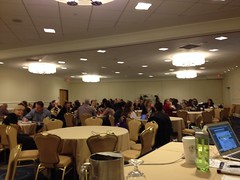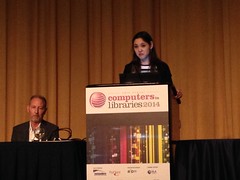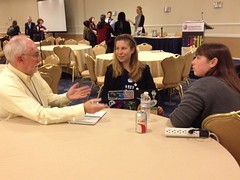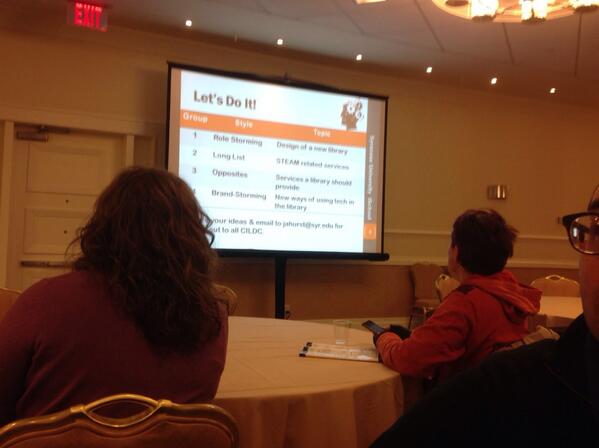Description:
Sweeney teaches attendees about some of the latest tools and techniques that SuperPACs use across the country to influence elections and advocate for their agendas. He shares how to use these tools and techniques to advocate for libraries, build a coalition of library supporters, market library services, and better inform the general populace about the importance of the library. Then hear from winners of the IMLS National Medal for Museum and Library Service for excellent service to their communities about ways they use technology to engage their communities, as well as some of their leading-edge practices. From AfterSchool Edge stations to help reduce summer learning loss in math to internet safety lessons for students, these libraries share perspectives on channeling technology to further their work as community anchors.
Session Notes
PC Sweeney - EveryLibrary - a superPAC. They can talk directly to voters.
Successes - Santa Clara and others. Great return on every dollar donated to a campaign.
34% would definitely vote for libraries
34% might vote for libraries
The remainder would vote no (26%)
Party affiliation doesn't matter.
Doesn't matter how many people in your community have a library card.
Library use doesn't matter. What does matter? The library's relationship to you/people/community.
The library is its staff....and the community thinks that everyone who works in a library is seen as a librarians.
The librarian IS the candidate.
Your library IS the campaign.
The library cannot tell people to vote yes or no. That is illegal.
People do things for you because they perceive that you like them.
Tell stories that matter. People don't care about statistics. Talk about impact.
Develop your message. Control your message. Your mission statement is your message to the public.
Build a coalition of supporters.
Keep your community engaged online.
Consider Facebook ads. They are cost effective.
"Give me an email list long enough and a program from which to send it and I can move the world." - Archimedes (not!)
Get out of the library. You need to be seen.
Do a door to door library card campaign. This is a great way of teaching staff how to do canvassing (not as part of their work).
Host house parties - could be book clubs. Again...make persona contact.
Host letter writing parties.
Develop an editorial calendar.
Do paid advertising. Radio, TV, newspapers, movie theaters
Show up at community meetings.
Attend / create networking events (Network after work(tm))
Michele Farrell - IMLS
National Medal for Museum and Library Services
Can your library be a winner? One of the things you get is a media campaign. You also get a StoryCorps visit.
You can leverage the National Medal. It can help you get grants and more funding.
Anyone can nominate. Deadline is October 15. Application is available at IMLS.gov
Are you working at an award winning library? The answer may be"yes"!
Kim Fender - Received the National Medal, May 2013, Hamilton County, Ohio
We don't collect data on our users, do we?
Birthdate
Zip code
Branch visited
...and more
During their strategic plan, created 10 cardholder clusters. Focused their services on three clusters.
Have a dashboard for each branch that displays who is coming in based on the clusters.
Also use the ILS to identify hot authors. You can designate who you want to follow. Can automatically put a hold on your favorite authors.
They also push out information on new arrivals.
Have weekly newsletters.
They do a lot of push marketing, because they have a lot of data. Beta library for the Savannah software.
Their data shows that people, who receive email blasts, are more active with the library.
Rethink your policies. Are they appropriate and friendly?
New branches will not have a service desk, but will use tablets with a mobile app.
Candace Rush, Park View High School, another IMLS winner
Diversity is their strength. 52% Hispanic. 24% white. 59% eligible for federally subsidized lunch programs.
They model the use of technology.
White technology through promethean suite.
ActiveInspire (flipcharts)
activotes and activexpressions
Use software and web-based presentation tools - video, movie, text, etc.
Use data collation software - for big question research.
Alexandria: your PVHS Information Portal
Access to the online catalogue, databases, ebooks, and more
"Mission Possible" library orientation - five missions
9th graders are divided into teams. They learn group work. Once a team is finished, they put together presentations on what they have found.
Digital Learning Day @ PVHS Library - setup 11 learning stations. Done during Teen Tech Week.
Teen Tech Week Maker Spaces




